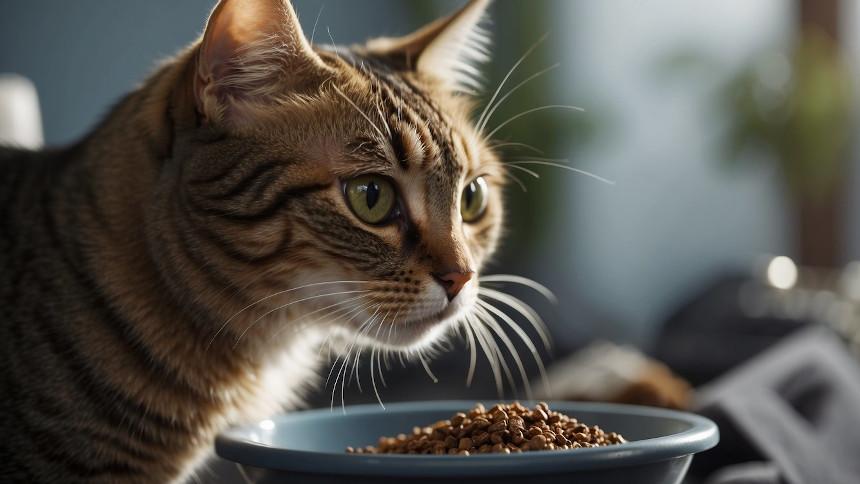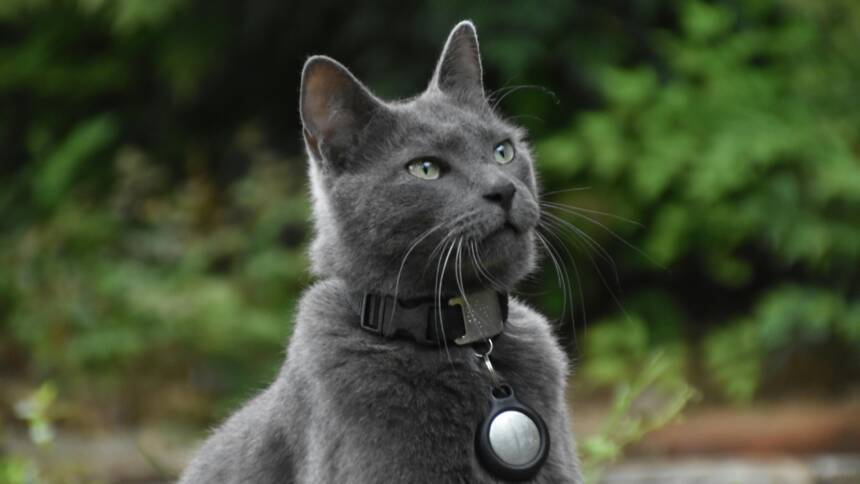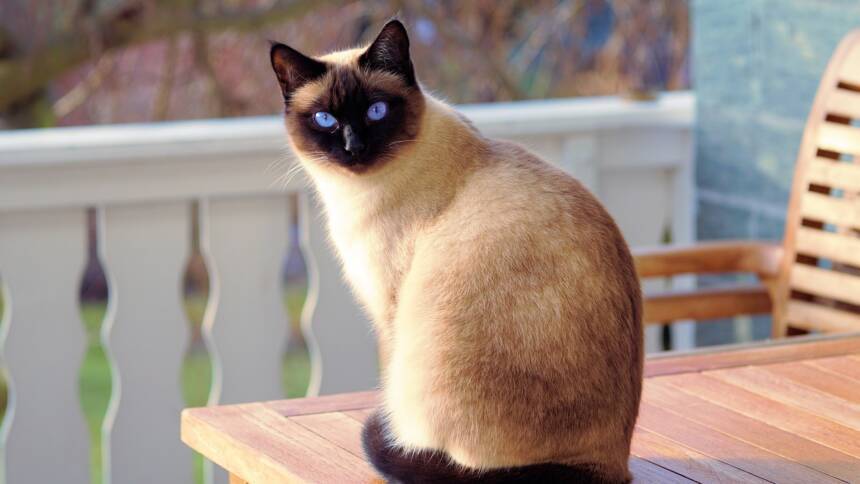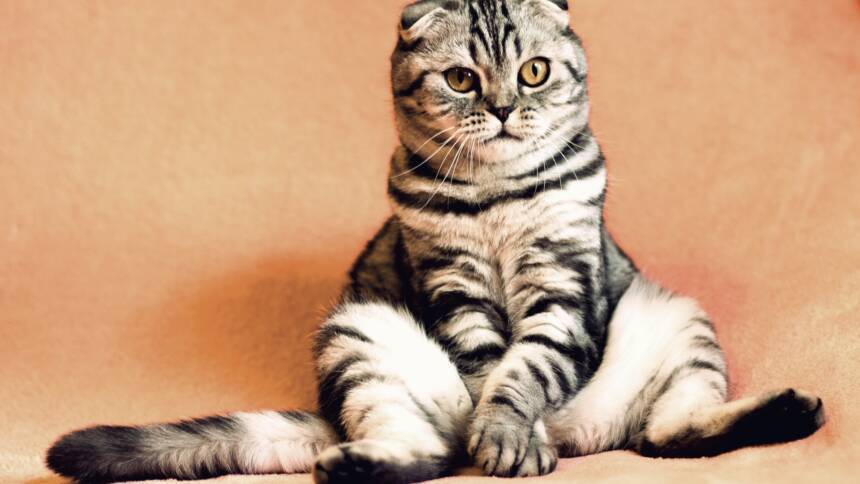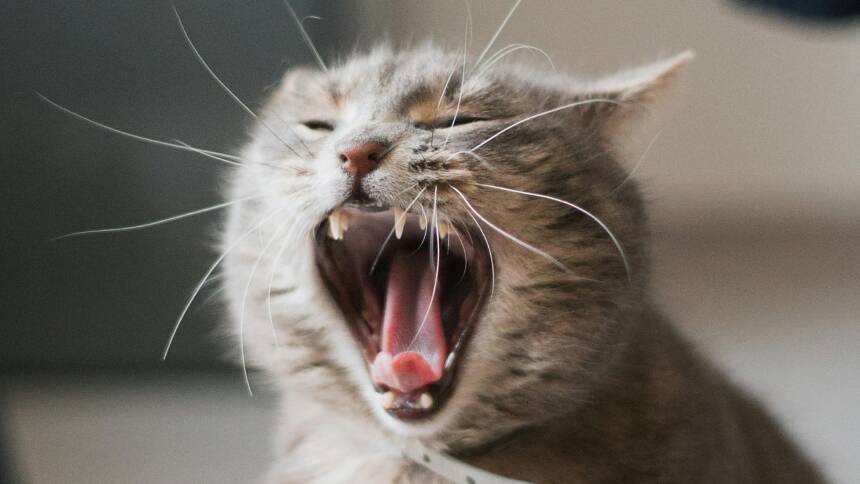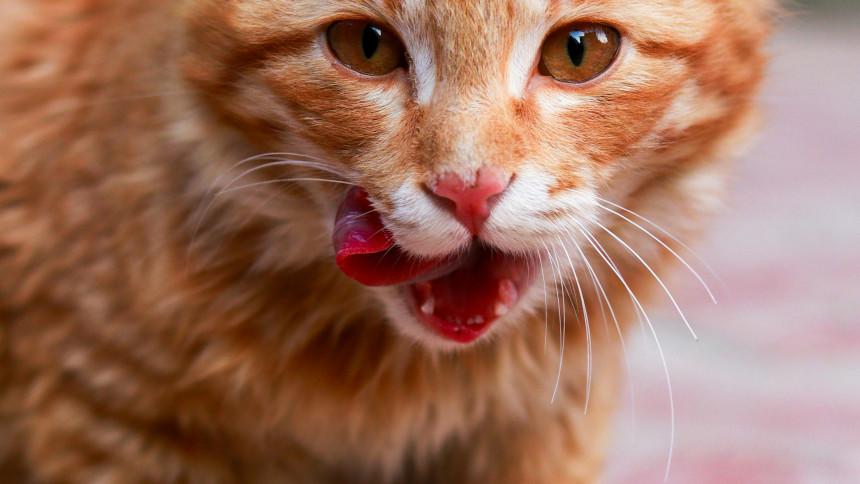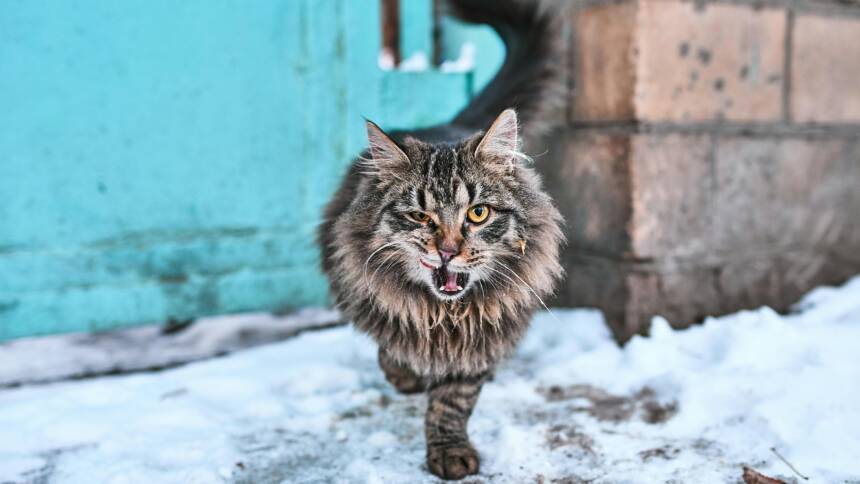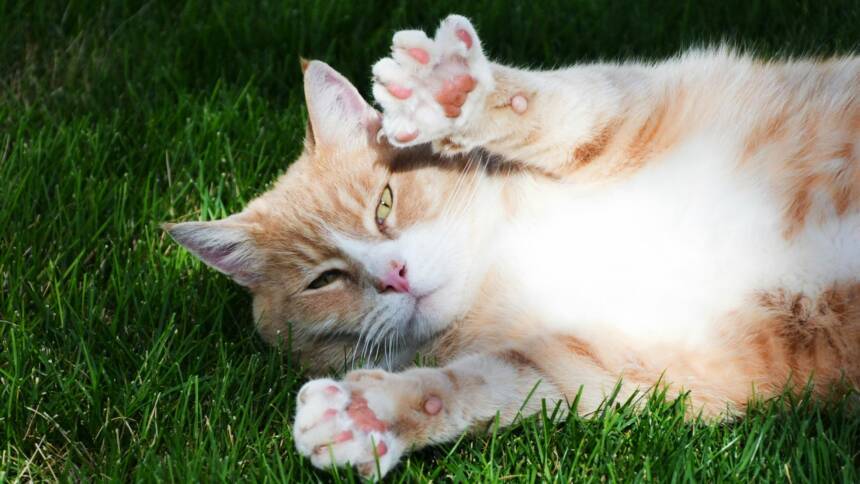When a cat starts eating feces and subsequently throws up, it’s a behavior that understandably causes concern for cat owners. Eating feces, or coprophagia, is relatively uncommon in felines and can suggest various health or behavioral issues. Vomiting in cats can be a symptom of dietary indiscretion, such as when a cat consumes inappropriate items, including feces. It can also be an indicator of underlying health problems ranging from digestive tract issues to systemic illnesses.
For a cat owner, witnessing their cat engage in such behavior presents an immediate impetus to understand the causes and seek remedies. Throwing up can be an acute response to an irritant in the stomach or a sign of chronic medical conditions. It is essential for the well-being of the cat that the owner addresses both the unusual eating behavior and its potential consequences.
Maintaining cat health requires close observation of their behavior and physical condition. A cat that eats feces and vomits requires attention to ensure there are no severe underlying health issues. A veterinarian’s input is critical in such cases as they can perform diagnostics to rule out conditions like parasites, dietary sensitivity, or other gastrointestinal disturbances. Investigating these symptoms early can help maintain a cat’s health and prevent more serious complications.
Understanding Cat Behavior
Cats exhibit a range of behaviors that may seem unusual to their owners, one of which is coprophagia, or the consumption of feces. This section explores the underlying reasons behind this behavior and its potential repercussions on a cat’s health.
Causes of Coprophagia in Cats
Parasites: Cats may consume feces due to the presence of parasites that affect their digestion and nutrient absorption. Ingesting fecal matter, unfortunately, may exacerbate this issue by exposing them to additional parasites.
- Behavioral Factors: Cats, especially kittens, exhibit various behavioral quirks, one being the exploration of their environment through taste, which can sometimes include feces.
- Stress: Stressful environments or changes in routine can trigger coping behaviors, including dietary indiscretion such as eating feces.
- Dietary Indiscretion: Cats may also eat feces when their diet lacks certain nutrients or when they’re intrigued by the scent and taste due to their inquisitive nature.
Presence of Hairballs: If a cat is trying to expel hairballs, they might accidentally ingest feces in the process, especially if they are prone to grooming excessively or if the litter box is not kept clean.
Common Health Issues Leading to Vomiting
Vomiting in cats can be a symptom of various underlying health issues, ranging from acute digestive system disorders to chronic medical conditions. Appropriate diagnosis and treatment are crucial for the cat’s well-being.
Digestive System Disorders
Disorders of the digestive system are a primary cause of vomiting in felines. Inflammatory bowel disease (IBD) is a condition characterized by persistent inflammation of the gut, which can lead to frequent vomiting and in some cases, regurgitation. Another common gastrointestinal issue causing this symptom is the formation of hairballs, as cats ingest hair during grooming. Treatment often involves dietary management and medication to reduce inflammation.
Diet-Related Reactions
Cats can have diet-related reactions that result in vomiting. Overeating, rapid consumption of food, or a sudden change in diet can trigger this response. Consuming non-food items, like toys, or ingesting harmful foods, can also lead to digestive upset and subsequent vomiting. In these cases, treatment may involve dietary modifications and, in some instances, surgery if foreign objects are ingested and cause an obstruction.
Chronic Medical Conditions
Several chronic medical conditions may also cause a cat to vomit. These include:
- Kidney disease: This can lead to a build-up of toxins in the blood, resulting in nausea and vomiting. Treatment focuses on managing the disease and maintaining hydration.
- Hyperthyroidism: Excessive thyroid hormone production often leads to increased appetite, weight loss, and vomiting. Treatment may include medication, radioactive iodine therapy, or surgery.
- Liver disease: Impaired liver function can cause a variety of symptoms, including vomiting. Treatment depends on the underlying cause and may involve medications and dietary changes.
Monitoring a cat’s health and prompt consultation with a veterinarian can help determine the cause of vomiting and the most effective treatment to alleviate the symptom.
Identifying the Symptoms
Identifying the symptoms of a cat eating poop and throwing up involves observing their behavior for vomiting and any signs of complications that could indicate a more serious underlying condition.
Recognizing Vomiting
A cat may exhibit vomiting as a clear sign of gastrointestinal upset. Vomiting can vary from infrequent and mild to persistent and severe. Here are specific attributes to look out for:
- Frequency: Keep track of how often the cat vomits. If it’s multiple times in a day, this can be a cause for concern.
- Color: The color of the vomit may range from the natural color of the cat’s food to yellow or green if bile is present. Sometimes, it may even contain elements of the ingested feces.
- Consistency: The vomit’s consistency could be frothy, liquid, or include undigested food. It might also contain hairballs, which are less concerning unless they are causing frequent vomiting.
Signs of Complications
When a cat is experiencing complications from ingesting feces and vomiting, look for more alarming symptoms such as:
- Blood in Vomit: The presence of red streaks or a coffee-ground appearance in the vomit can indicate internal bleeding.
- Weight Loss: Continuous vomiting might lead to weight loss due to decreased nutrient absorption or a decreased desire to eat.
- Behavioral Changes: A cat may show signs of nausea such as drooling, lethargy, or changes in water consumption.
These symptoms, particularly if persistent, require immediate veterinary attention. They could indicate more serious health issues such as an infection, toxin exposure, or gastrointestinal obstruction.
Diagnosis and Examinations
When a cat exhibits symptoms such as eating poop (coprophagia) and vomiting, it is crucial to undergo a thorough diagnosis and examination process. This ensures the veterinarian can identify the underlying cause and tailor an effective treatment plan. The following subsections detail the diagnostic methods that may be utilized.
Laboratory Tests
Laboratory tests are fundamental to the diagnosis. Blood tests can uncover signs of disease, check for anemia, and reveal signs of infection or organ dysfunction. Fecal exams are also essential, as they can detect the presence of parasites, which might be the reason for the cat’s coprophagia and subsequent vomiting.
- Common laboratory tests include:
- Complete Blood Count (CBC)
- Biochemical Profile
- Fecal Analysis
- Specific tests for viral infections (e.g., Feline Leukemia Virus, Feline Immunodeficiency Virus)
The frequency and specifics of these tests depend on the individual cat’s symptoms and health history.
Imaging Techniques
Imaging techniques serve as non-invasive tools to visualize the internal structures of a cat’s body. An X-ray can reveal whether there are foreign bodies within the digestive tract, a common cause of vomiting. It can also show signs of intestinal obstruction or other abnormalities.
- Key imaging techniques utilized:
- X-rays: can detect obstructions, masses, bone fractures, or organ size changes.
- Ultrasound: provides a more detailed view, especially for soft-tissue analysis.
These imaging tests are often used in conjunction to provide a comprehensive assessment of the cat’s internal condition.
Treatment Options
Treating a cat that eats feces and exhibits vomiting involves a combination of medical interventions, dietary management, and possibly surgical procedures. Effective treatment is critical to address the underlying causes and prevent further health issues.
Medical Treatments
For cats presenting with nausea and vomiting due to ingesting feces, veterinarians may administer anti-nausea medications and antibiotics to combat any resulting infection. Parasites, often acquired from feces, may be treated with specific deworming medications. Fluid therapy is crucial to prevent dehydration and maintain hydration levels in cats who are vomiting. In some cases, supportive treatments like probiotics can assist in restoring a cat’s intestinal flora.
Dietary Adjustments
Cats that are vomiting may benefit from a special diet formulated to be easily digestible and reduce strain on the gastrointestinal system. Vets often recommend feeding small, frequent meals and may include a transition to hypoallergenic or gastrointestinal-specific formulations. Temporary fasting can be advised to allow the stomach to settle, followed by the gradual reintroduction of food.
Surgical Interventions
When a cat has ingested a foreign object or is affected by a severe blockage, surgery might be necessary. Surgical intervention is considered when medical treatment does not resolve the obstruction or if there is a risk of perforation and subsequent infection. Postoperative care often involves strict dietary management and monitoring for signs of recovery or complications.
Prevention and Care
Cats’ health complications, such as consuming inappropriate substances or vomiting, often stem from dietary issues or environmental factors. A strategic approach to prevention and care involves meticulous dietary management and providing a stimulating environment.
Dietary Management
A cat’s diet should prioritize nutrition and prevention of food-related issues. Food allergies and intolerances can lead to gastrointestinal upsets. It is imperative to identify and eliminate allergenic foods from the diet. Owners should consult a veterinarian to determine if their cat has a food allergy and follow a prescribed bland diet or hypoallergenic food plan as needed.
Table 1: Components of a Preventative Feline Diet
| Essential Component | Description | Note |
|---|---|---|
| Balanced Nutrition | A diet formulated to meet all the nutritional needs of a cat. | May need adjustment with age. |
| Wet Food | Provides moisture to help maintain hydration and prevent dehydration. | Often preferred by cats. |
| Limited Treats | Treats can unbalance a diet and should only be given sparingly. | Avoid human foods. |
| Fiber | Adequate fiber helps prevent the ingestion of hair during grooming. | Can be found in special kibbles. |
Feeding the recommended portions of high-quality cat food and ensuring clean, fresh water is vital to deter gastrointestinal problems. This also reduces the chances of a cat looking for inappropriate food sources which can include feces.
Environmental Enrichment
To discourage inappropriate eating behavior like consuming feces, an enriched environment with plenty of stimulation is vital. Environmental enrichment can reduce stress and boredom, which often lead to problematic behaviors.
- Toys: Offer various toys that stimulate hunting instincts.
- Feeding puzzles: Slow feeders encourage slower eating, aiding in digestion.
- Scratching posts: Provide appropriate outlets for natural behaviors.
- Cat grass: Having cat-friendly plants can prevent the cat from eating feces out of curiosity or boredom.
Regular grooming can reduce hairball formation, decreasing the risk of vomiting after grooming. Additionally, keeping the cat’s litter box clean and free from feces discourages coprophagic behavior (the act of eating poop). Monitoring for parasites with regular veterinary check-ups and maintaining a clean environment are also pivotal for preventing the ingestion of feces which could lead to more serious health issues.
When to Call the Vet
When a cat exhibits unusual behaviors such as eating feces (coprophagia) and vomiting, it is essential to understand when veterinary attention is required. This section explains the circumstances under which one should seek immediate emergency care and when to schedule routine health checks.
Emergency Situations
In cases where a cat shows signs of distress such as retching, chronic vomiting, or vomiting along with other symptoms like lethargy, fever, or loss of appetite, immediate action is necessary. Owners should also be vigilant for indications of a cat having ingested a foreign body which can cause gastrointestinal blockage and distress.
- Gastroenteritis: If signs of vomiting are accompanied by diarrhea or blood in vomit, it raises the concern for gastroenteritis, a condition that requires prompt veterinary consultation.
- Chronic Vomiting: Vomiting more than once a week or for an extended period exceeding three months necessitates evaluation by a veterinarian to diagnose underlying issues.
- Lethargic Behavior & Fever: A marked decrease in energy or an abnormal increase in body temperature warrants a veterinary checkup.
- Ingestion of Foreign Object: Should there be a suspicion that the cat has swallowed something inappropriate, seek immediate vet care as this could lead to an obstruction.
Routine Health Checks
Regular visits to the veterinarian are crucial for maintaining a cat’s health and well-being. Routine evaluations provide an opportunity to discuss any concerns, such as a cat’s inclination to eat feces or occasional vomiting, which could indicate dietary issues or digestive disturbances.
- Annual Health Evaluations: Schedule at least an annual vet appointment to ensure preventive care and discuss any behavioral changes.
- Monitoring Vomiting: If a cat vomits occasionally (less than once a week), it should be monitored, and a veterinary visit should be considered to rule out any serious conditions.
Understanding Cat Nutrition
Proper cat nutrition is essential in preventing digestive issues, such as vomiting and inappropriate eating behaviors like consuming feces (coprophagia). Key factors include the quality of cat food and the management of feeding routines.
Selecting Quality Cat Food
Selecting the right cat food is crucial for a cat’s overall health and can directly impact instances of vomiting. When choosing cat food, one must ensure it meets the cat’s nutritional requirements which vary by age, size, and activity levels. High-quality cat food should contain:
- Protein: The primary ingredient, often meat, fish, or poultry, to support growth and repair.
- Fats: Provide energy and support coat health.
- Vitamins and Minerals: Essential for various bodily functions.
- Amino Acids: Taurine, for instance, is critical for heart and eye health.
Owners should be cognizant of food allergies, which might manifest as vomiting, diarrhea, or decreased appetite. Ingredients such as specific proteins can trigger allergies, so hypoallergenic foods might be recommended.
Managing Food Portions and Habits
Portion control and feeding habits are significant to prevent issues like vomiting undigested food, which can occur when cats eat too fast or overeat. Here are strategies to manage feeding:
- Meal Timing: Consistent feeding schedules can prevent overeating.
- Portion Sizes: Appropriate portions minimize the risk of obesity and reduce strain on digestion.
- Eating Pace: Slow-feeder bowls or puzzle feeders can help cats that eat too fast.
It’s also not unusual for cats to ingest grass, which may trigger vomiting. While generally not a concern, continual vomiting, especially with undigested food, warrants veterinary attention. Observing vomit color can provide clues to health issues: for example, green may indicate bile, and red might suggest the presence of blood.
Incorporating these practices into feeding routines can decrease the likelihood of nutrition-related issues and support a cat’s overall well-being.
